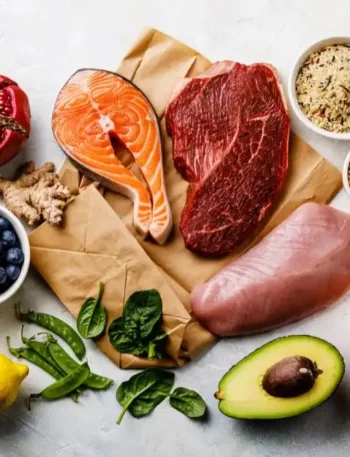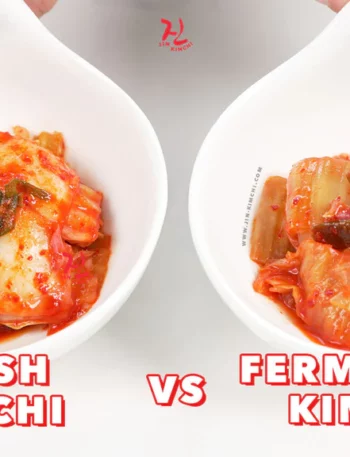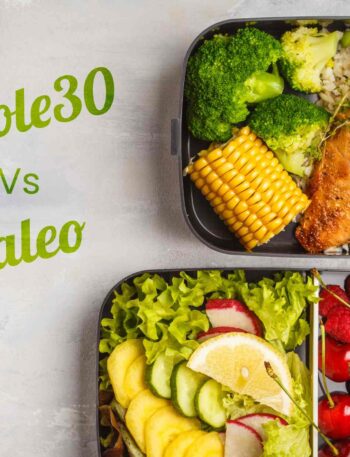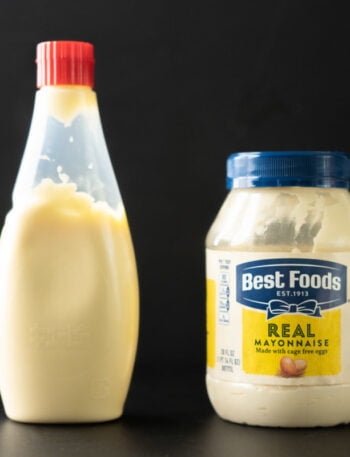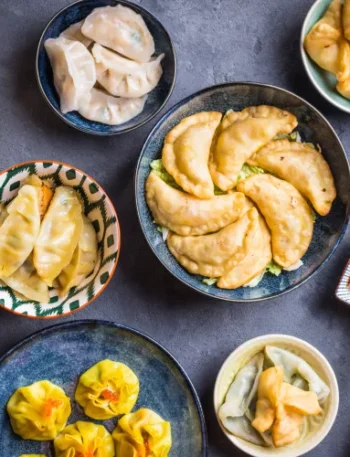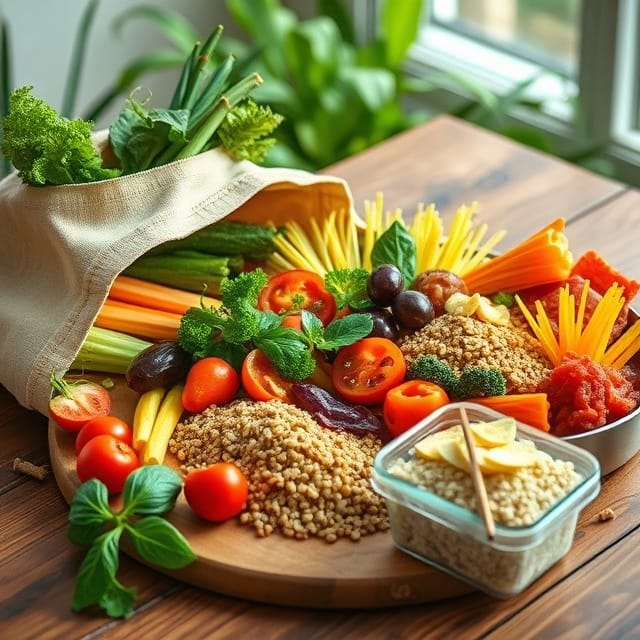
Eating sustainably sounds fancy, almost like it’s reserved for hipsters with farmer’s market tote bags and a wallet full of cash. But here’s the thing — you don’t need to break the bank or go full vegan monk mode to make your meals kinder to the earth and your savings account. You just need a little know-how and a dash of creativity. Ready to cook up some planet-friendly magic? Let’s dive in.
Step 1: Rethink Protein — No Steak Every Night
“Meat and potatoes” is the anthem of many kitchens, but here’s the tea: cutting back on meat is one of the biggest favors you can do for the planet and your wallet.
Did you know producing one kilogram of beef guzzles over 15,000 liters of water? That’s like leaving your shower running for hours! But don’t stress — this isn’t about quitting cold turkey (pun intended).
Swap in affordable, protein-packed options like lentils, chickpeas, tofu, or even tempeh (an Indonesian superstar). Bonus? These are cheap, versatile, and won’t make you miss meat as much as you’d think.
For example, instead of beef tacos, try black bean tacos with all the fixings. Or jazz up your weeknight pasta with a hearty lentil Bolognese. Same satisfaction, smaller footprint. You’re basically a climate superhero.
Step 2: Shop Smart — Not Like a Headless Chicken
Walking into the grocery store hungry, grabbing everything in sight, and realizing at checkout that you’ve blown your budget again. The fix? Planning is your bestie.
Before you shop, map out meals for the week — keep it simple and stick to recipes that share ingredients. That half-head of cabbage from Monday’s stir-fry can moonlight as coleslaw on Wednesday. Waste not, want not, right?
Oh, and get cozy with your local farmer’s market or co-op. Seasonal produce is not only cheaper, but it’s also fresher and hasn’t traveled halfway around the globe, burning fuel.
Plus, buying imperfect veggies — the ones grocery stores reject for being too “ugly” — can save you some serious cash. Who cares if your carrot’s a little crooked? It’s still delicious.
Step 3: Batch Cook Like a Boss
Here’s a trick that’ll save you time, money, and a whole lot of midweek stress: batch cooking. Set aside a couple of hours on the weekend to whip up big batches of staples — think soups, stews, grains, and roasted veggies.
Portion them out, pop them in the fridge or freezer, and bam! You’ve got mix-and-match meals ready to roll all week.
Just imagine this: you roast a tray of sweet potatoes, cauliflower, and carrots. Pair them with rice and chickpeas on Monday, toss them into a salad on Tuesday, and use them in a curry on Thursday. Same base, different vibe. Who knew leftovers could feel this fancy?
Step 4: Love Your Leftovers (No, Seriously)
Speaking of leftovers… stop treating them like sad fridge rejects. Repurpose them! That stir-fry from last night? Wrap it up in a tortilla with some fresh greens and a drizzle of hot sauce.
Yesterday’s roasted chicken? Shred it into a comforting soup or toss it on a pizza. It’s not about eating the same meal on repeat — it’s about getting creative and turning yesterday’s scraps into today’s masterpiece. Waste is so last season, anyway.
Step 5: Go DIY — You’re Craftier Than You Think
Let’s talk packaged snacks and sauces. They’re convenient, sure, but they’re also expensive and come wrapped in enough plastic to make a turtle weep. Making your own granola, salad dressings, or even plant-based milk isn’t as hard as it sounds — and it’s way cheaper.
Plus, there’s something oddly satisfying about knowing you whipped up your own almond milk or hummus. “Oh, this? Yeah, I made it myself.” Instant flex.
Step 6: Embrace the Freezer’s Magic
Your freezer is the unsung hero of sustainable eating. Bought too many bananas? Freeze ’em for smoothies. Found a great deal on bulk chicken or fish? Portion it out and stash it for later. Even herbs — those fragile little guys that always seem to wilt before you can use them — can be chopped up and frozen in olive oil cubes. It’s like a little time capsule of flavor waiting to rescue your recipes.
Step 7: Think Global, Cook Local
Ever noticed how cuisines from around the world often lean on plant-based, budget-friendly staples? Indian dals, Mediterranean mezze, Indonesian nasi goreng — these dishes are packed with flavor and use affordable ingredients like rice, legumes, and vegetables. So, spice things up! Raid your pantry for some curry powder or soy sauce and let your taste buds travel without the carbon emissions of a plane ride.
Step 8: Treat It Like a Game
Saving the planet doesn’t have to feel like a chore. Turn it into a challenge: how many meals can you make from one bag of lentils? How low can you get your weekly grocery bill while still eating like royalty? Get the family or your roomies involved — winner buys dessert!
By making it fun, you’ll stick with it longer. And you might just inspire others to jump on the sustainable-eating train. The more, the merrier, right?
Sustainable eating isn’t about perfection — it’s about progress. Start small. Swap one meat-heavy meal for a plant-based one. Use up what’s already in your pantry before buying more. Celebrate your wins, no matter how tiny.
Because every bite you take is a chance to nourish yourself and the planet. And isn’t that what it’s all about? Sharing good food, saving some coin, and leaving the earth a little better than we found it. Now, that’s a recipe worth keeping.


